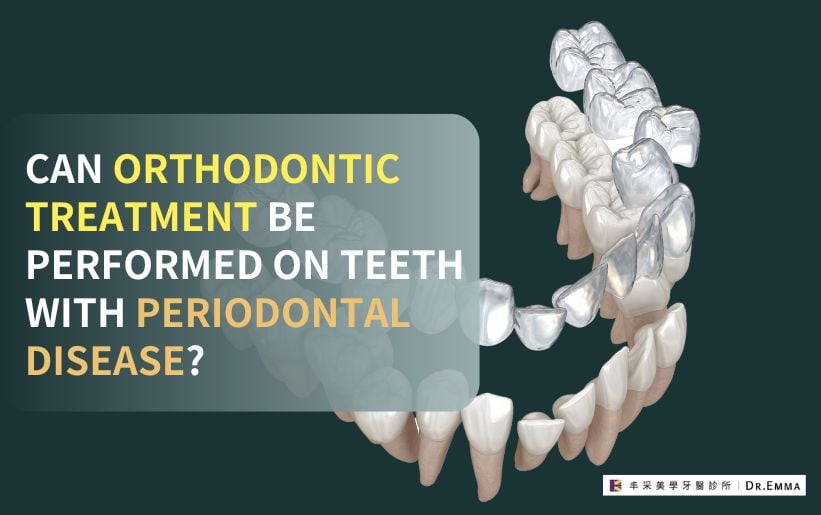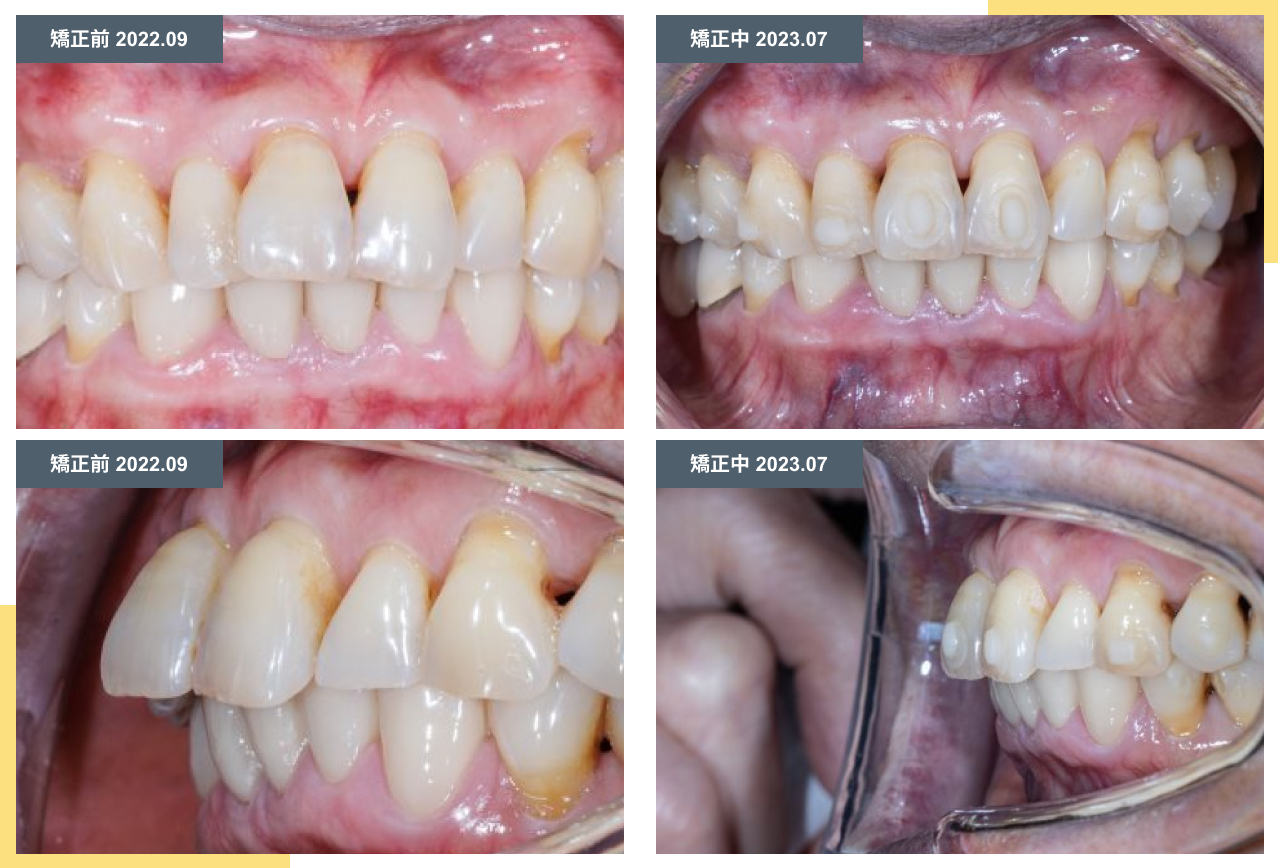Can orthodontic treatment be performed on teeth with periodontal disease? Which is more suitable, Invisalign or traditional brackets?
Dr.Emma

Typically, people associate orthodontic treatment with young individuals who have healthy teeth. However, the reality is that a significant proportion of individuals requiring orthodontic treatment also suffer from varying degrees of periodontal disease. So, the question arises: Can teeth with periodontal disease undergo orthodontic treatment? If so, which option, traditional brackets or Invisalign, is more suitable? Let's delve further into the relationship between periodontal disease and orthodontic treatment.
Understanding Periodontal Disease
Periodontal disease is a chronic inflammatory condition caused by bacteria in the oral cavity, which affects the gums and supporting structures such as the alveolar bone. It starts with gingivitis, a mild gum disease characterized by redness, swelling, and easy bleeding of the gums. If left untreated, gingivitis can progress to periodontitis, a more severe form of gum disease where the surrounding bone is also affected and damaged. This bone loss can lead to tooth mobility and even tooth loss due to lack of support.
Can Orthodontic Treatment and Periodontal Disease Coexist?
Historically, the presence of periodontal disease has been considered a contraindication for orthodontic treatment, as moving teeth within inflamed periodontal tissues could exacerbate the inflammation and lead to further bone loss. However, recent studies have shown that orthodontic treatment can be safely performed before or during a well-controlled periodontal condition. Several research reports indicate that orthodontic treatment can improve periodontal health and address malocclusion issues. Additionally, it can reposition teeth that have shifted due to bone loss, contributing to periodontal control. Therefore, orthodontic treatment is viable when periodontal disease is well controlled.
Invisalign and Traditional brackets: Which is More Suitable for Patients with Periodontal Disease?
Regarding the treatment of patients with periodontal disease, recent research suggests that Invisalign may offer advantages over traditional brackets.
Invisalign and Periodontal Health
Invisalign's clear aligners can be removed, making it convenient for patients to maintain good oral hygiene during treatment. Many studies have found that patients using Invisalign show better results in terms of plaque index, probing pocket depth, and gingival index compared to those undergoing traditional brackets. Moreover, Invisalign carries a lower risk of periodontal bacterial growth and inflammation, further promoting periodontal health. These advantages make Invisalign an attractive option for patients with periodontal disease.
Traditional brackets and Periodontal Health
Traditional orthodontic brackets and archwires can make it difficult for patients to maintain oral hygiene. Research shows that patients with traditional brackets often have a higher plaque index and are more prone to gingival inflammation, which could exacerbate periodontal disease. However, it's important to note that maintaining good oral hygiene is still possible with traditional brackets, and many patients do not experience significant periodontal issues during treatment. Additionally, the use of low-profile brackets and improved oral hygiene aids can help minimize these risks.
Long-Term Outcomes of Orthodontic Treatment in Patients with Periodontal Disease
Multiple research studies have demonstrated that wearing Invisalign aligners may result in less gingival recession compared to traditional brackets. These findings suggest that Invisalign treatment may help reduce the risk of gingival recession.
However, it's essential to recognize that each patient's case is unique, and treatment outcomes may vary. The occurrence of gingival recession is influenced by multiple factors, including individual oral hygiene habits, tooth position, and the specific treatment plan. Therefore, it is still recommended for patients to consult and assess with their dentist before undergoing orthodontic treatment, ensuring the most suitable treatment plan is chosen, and maintaining good oral hygiene practices to protect gingival health to the fullest extent.
Case report

The image shows a 70-year-old elderly woman in her seventies who has gradually improved the spacing between her upper and lower teeth through nearly ten months of Invisalign treatment. She is currently still undergoing treatment. In addition to the improvement in overjet, it can be observed from the photo that the patient's gum recession did not deteriorate, and the initial mild root exposure has not worsened.
This case demonstrates the significant advantages of Invisalign treatment in preserving tooth structure and periodontal tissue. Even in the age group of seventy and above, the success of this patient highlights the potential of Invisalign treatment across different age groups.
Results
In the past, periodontal disease has been considered a contraindication for orthodontic treatment. However, recent research indicates that patients with periodontal disease can still safely undergo orthodontic treatment. Invisalign, with its removable and easy-to-clean features, may be a more suitable option for patients with periodontal disease. However, treatment choices should be based on the specific circumstances of the patient, including their periodontal health status, treatment needs, and personal preferences. For patients with periodontal disease, it is recommended to seek advice and evaluation from dental professionals before proceeding with orthodontic treatment.
References:
- Assessment of the periodontal health status and gingival recession during orthodontic treatment with clear aligners and fixed appliances: A systematic review and meta-analysis
- Periodontal health status in patients treated with the Invisalign® system and fixed orthodontic appliances: A 3 months clinical and microbiological evaluation
- Effect of periodontal–orthodontic treatment of teeth with pathological tooth flaring, drifting, and elongation in patients with severe periodontitis: A systematic review with meta‐analysis
